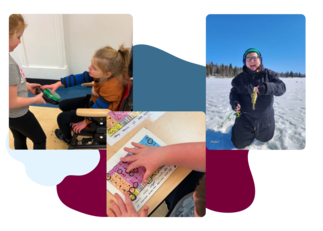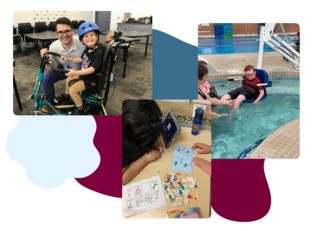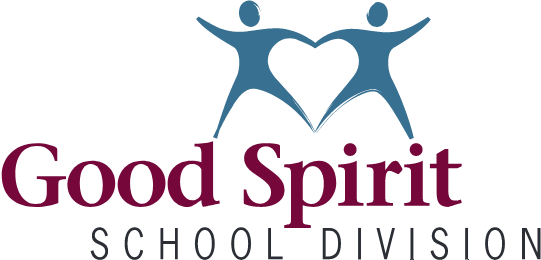
Good Spirit School Division Accessibility Plan 2024-2027
All GSSD webpages include the option to enlarge the screen (Hold the CTRL button and press the + button until the font size is right for you. Use CTRL and - to reduce the size).
Our Vision for Accessibility
The Good Spirit School Division is committed to identifying, removing, and preventing accessibility barriers for individuals who work in or access our facilities, programs, and services. Guided by the principles of Accessibility for All, the Saskatchewan Human Rights Code, and the Calls to Action of the Truth and Reconciliation Commission, Good Spirit School Division seeks to create culturally responsive, inclusive solutions that benefit not only persons with disabilities but our entire school community. In alignment with this commitment, and in response to The Accessible Saskatchewan Act—which came into force on December 3, 2023—Good Spirit School Division is developing and publicly sharing an accessibility plan.
Our focus:
- High Quality Teaching and Learning - Equip staff with the knowledge and tools to create barrier-free classrooms and environments.
- Healthy, Sustainable Physical and Social Environments – Improve accessibility in facilities and foster a culture of equity and inclusion across GSSD.
- Engagement of All Students, Families, and Communities – Make programs, services, and digital content accessible for all students, families, and communities.
- Effective Policy and Procedures – Remove barriers in spaces, policies, and procedures while building a diverse, inclusive workforce.

The Approach
To support our commitment to The Accessible Saskatchewan Act, Good Spirit School Division is developing a three-year accessibility plan that formalizes our efforts to remove and prevent barriers. This plan will serve as a roadmap for setting priorities, allocating resources, and implementing short-, medium-, and long-term actions that promote accessibility across all schools and division-operated facilities.
Next Steps
A dedicated committee is leading this work and will:
-
Review current programs, services, and infrastructure
-
Consult with stakeholders, including persons with disabilities, to gather diverse perspectives
-
Use feedback to identify key accessibility priorities
-
Define clear, actionable steps to address barriers
-
Create a framework to guide implementation over the next three years
Goals
Goal 1 – Improve employee knowledge and awareness of accessibility
Goal 2 – Make school division buildings and properties more accessible
Goal 3 – Improve the accessibility of school division programs and services
Goal 4 – Make digital content more accessible
Goal 5 – Support a diverse and inclusive workforce
Goal 6 – Provide leadership to promote accessibility and inclusion
Types of Barriers
Accessibility barriers: The Accessible Saskatchewan Act, defines a barrier as anything that hinders or challenges the full and equal participation in society of persons with disabilities.
Physical barriers: Physical barriers exist when spaces are designed in ways that prevent or limit mobility or access.
For example:
- Hosting public events at a venue that is only accessible by
- Parking lots with no curb cuts that make it difficult to access
- Washrooms that lack accessible stalls or automatic door
Information and Communications Barriers: exist when information or material is shared in a way that is not accessible to all people.
For example:
- Using small print that is hard to
- Websites and documents that are not accessible for screen readers or convert text to multiple languages.
- Videos that do not have closed
Attitudinal Barriers: exist when people act or think based on false assumptions.
For example:
- Not including persons with disabilities in decisions that impact
- Making assumptions about a person’s ability to communicate or do things for themselves.
- Avoiding a person with a disability for fear of offending
Glossary of Common Definitions
Ableism and Disability Oppression: Ableism or disability oppression is the discrimination of and social prejudice against people with disabilities based on the belief that typical abilities are superior. At its heart, ableism is rooted in the assumption that disabled people require 'fixing' and defines people by their disability. Ableism views typical abilities as the norm and devalues people who have physical, intellectual, psychiatric, sensory, or other disabilities.
Accommodation: Any technical aid or device, personal support or disability-related support that a person may require. This can include, but is not limited to, accessible document formats, mobility supports to attend a meeting, interpretation or captioning services, or ensuring space has sensory sensitive features.
Adaptability: The ability to be modified for a new use or purpose. Disability and accessibility are evolving concepts that change as services, technology and attitudes change.
Alternate formats: Alternate ways of providing information beyond traditional printed material. Examples include large print, text-only documents and Braille.
Alternative text: Also referred to as alt tags or alt attributes. Alternative text provides a verbal description of a visual or graph for individuals with visual impairments who use screen readers.
Barrier: Anything that hinders or challenges the full and equal participation in society of persons with disabilities.
Captioning: Text at the bottom of the screen (television/video) allows people to follow spoken dialogue and distinct noises. Closed captioning is similar, but the text must be decoded to appear on the screen.
Disability: Any impairment that, in interaction with a barrier, hinders an individual’s full and equal participation in society. Disabilities can be permanent, temporary or episodic in nature, and may or may not be evident. There are many types of disabilities that people experience, including physical, mental, intellectual, cognitive, learning, communication and sensory impairments.
Diversity: Recognizing that each person is unique and has different backgrounds. Diversity means including or involving people from a range of different social or ethnic backgrounds and of different genders, sexual orientations, disabilities, etc.
Inclusion: Providing equal access to opportunities and resources for people who might otherwise be excluded or marginalized, such as individuals with physical or intellectual disabilities and members of other minority groups.
Gender Diversity: Gender diversity encompasses the recognition and celebration of individuals whose gender identities and expressions fall outside of the traditional binary of male and female. It includes transgender, non-binary, and gender-nonconforming individuals, among others.
Large print: Printed information provided in a large font size (18 pt or larger) for people who have low vision. For easier reading, select “sans serif” fonts.
Neurodiversity: Neurodiversity acknowledges that differences in how brains function are normal variations, not deficits, and embraces the diverse ways people think, learn, and interact with the world.
Plain language: Clear, conversational communication that makes sense to the intended audience. The goal of plain language is to communicate so clearly that the intended audience can easily find what they need, understand what they find, and use the information.
Self-determination: People are empowered to make their own choices and control their own lives.
Service animal: The Saskatchewan Human Rights Commission defines a service animal as an animal with specialized training to assist a person with a recognized physical and/or mental disability.
Universal design: Universal design means making things safer, easier and more convenient for everyone. It involves a range of design concepts, including design of products, or spaces and environments, to provide access in a way that respects all abilities.








